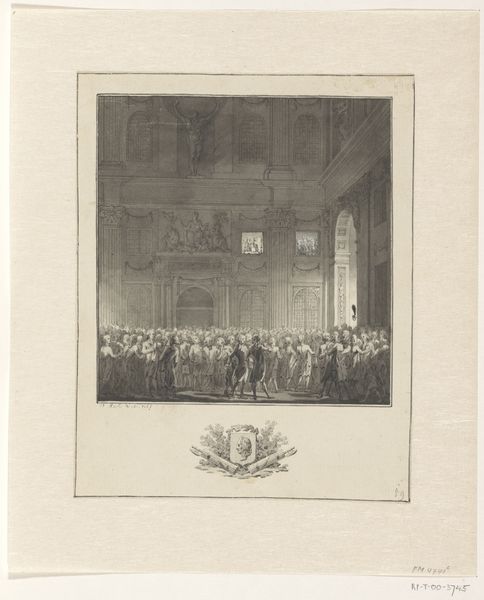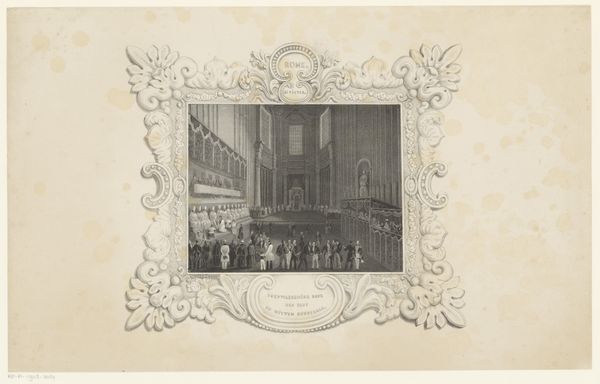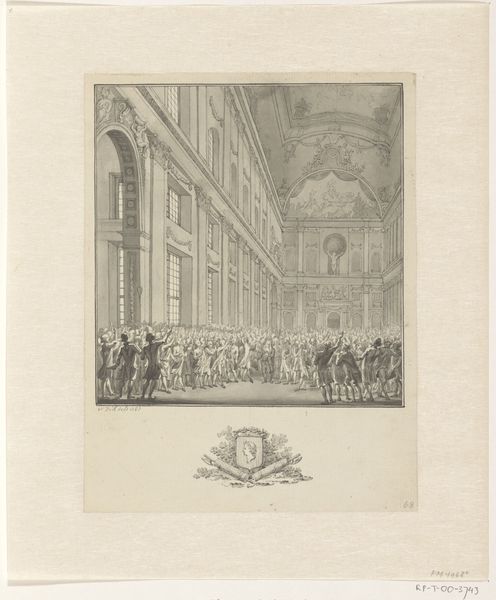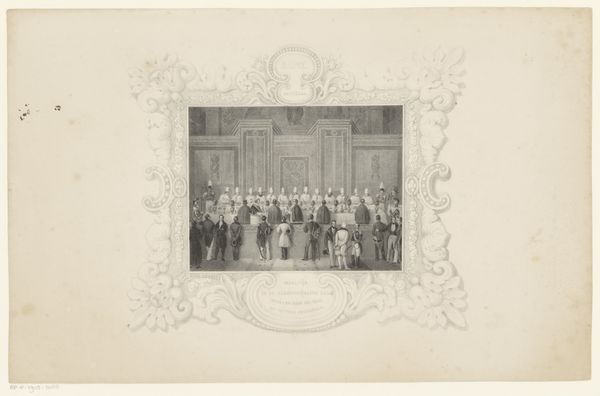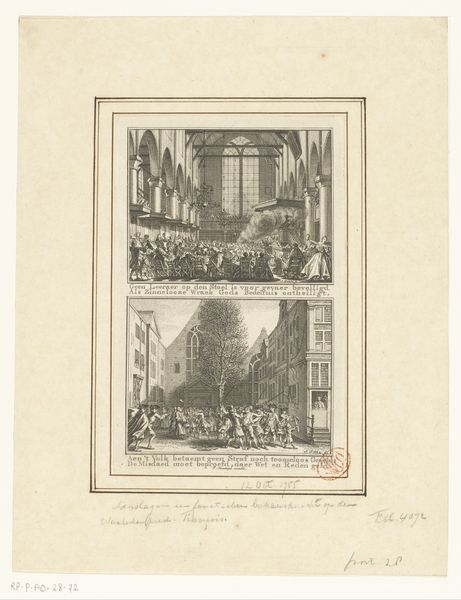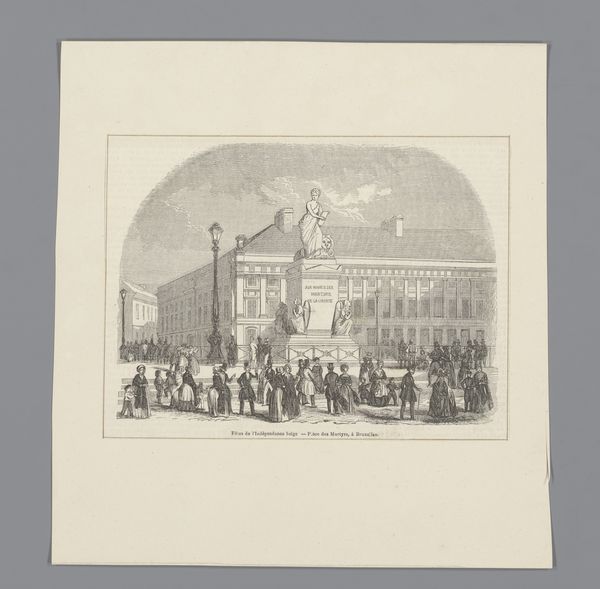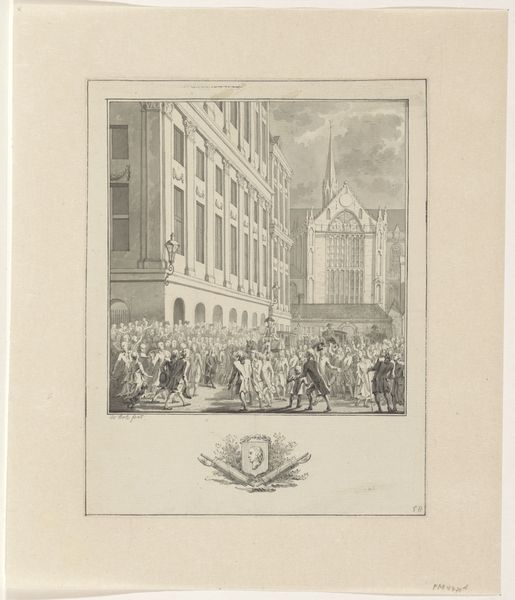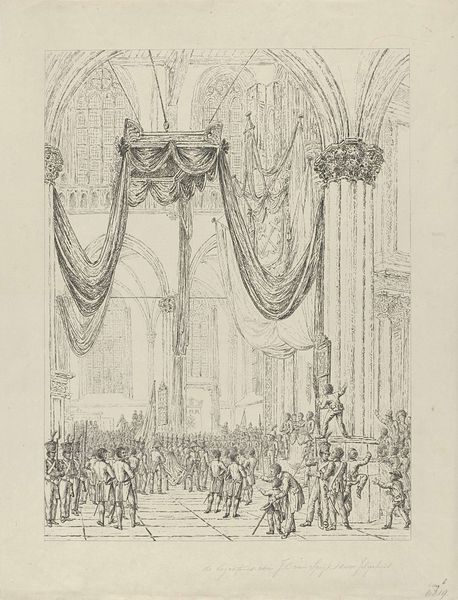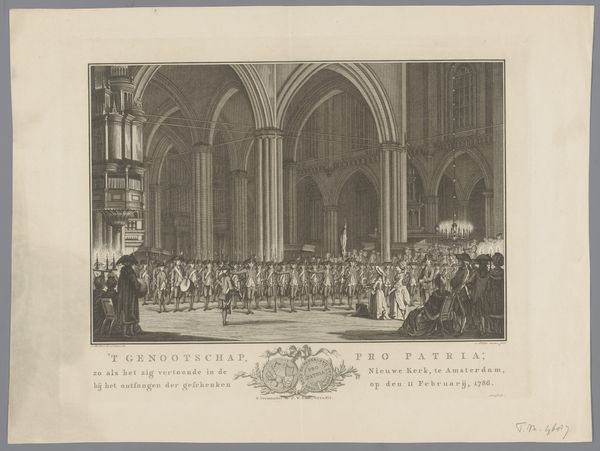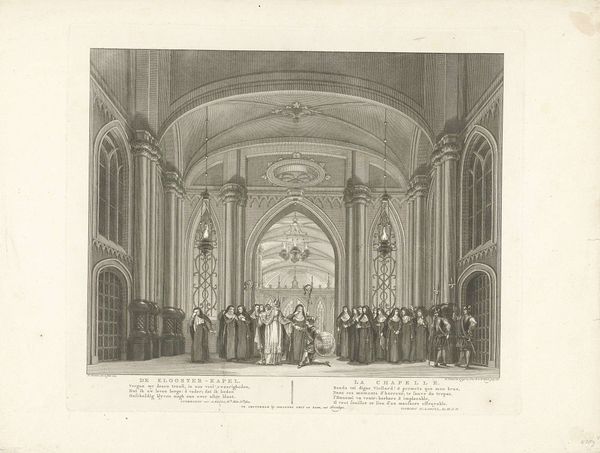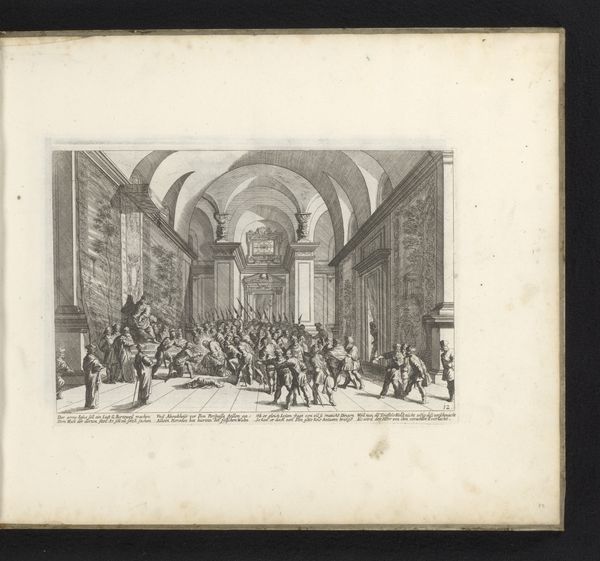
drawing, print, pencil
#
drawing
#
aged paper
#
toned paper
#
light pencil work
# print
#
pencil sketch
#
old engraving style
#
personal sketchbook
#
pen-ink sketch
#
pencil
#
sketchbook drawing
#
watercolour illustration
#
history-painting
#
academic-art
#
sketchbook art
Dimensions: height 496 mm, width 314 mm
Copyright: Rijks Museum: Open Domain
Editor: Here we have Franciscus Bernardus Waanders' "Mass in the Sistine Chapel," dating from 1838-1839. It's a print, a pencil drawing, capturing this grand scene in incredible detail. It feels quite formal and removed, like we are viewing it from a great distance, physically and temporally. How do you interpret this work, especially considering its historical context? Curator: It’s interesting you pick up on that sense of distance. Think about what the Sistine Chapel represented in the 19th century - the papacy, the church's authority, and by extension, traditional power structures. Waanders, by documenting this mass, is situating himself and his viewers within a specific power dynamic. What do you notice about the people depicted? Editor: They seem like dignitaries and clergymen, definitely a gathering of powerful individuals. And the architectural detail is incredibly precise. Curator: Exactly. Waanders isn’t just depicting a religious ceremony; he's documenting a performance of power. Consider the revolutions and social upheaval happening across Europe during this period. Representing this spectacle might signify a yearning for the old order or even be a critique of its extravagance and perceived distance from the people. How does the artist's choice of such a light medium – pencil and print – affect your interpretation? Editor: Perhaps the lightness and detail convey the fragile and tenuous grasp of those power structures at that specific moment. Almost like he is observing, documenting, but from afar. Curator: Precisely. It is a lens that reveals much about the artist's social commentary in that period. I wonder, if we juxtaposed this piece with works depicting revolutionary gatherings, what kind of dialogue could we initiate regarding power, representation, and social change? Editor: I’m struck by how a seemingly straightforward historical record becomes layered with possible meanings when viewed through a lens of social and political dynamics. It goes beyond the visual representation of space, really! Curator: It highlights the power of art to both reflect and challenge the status quo.
Comments
No comments
Be the first to comment and join the conversation on the ultimate creative platform.
